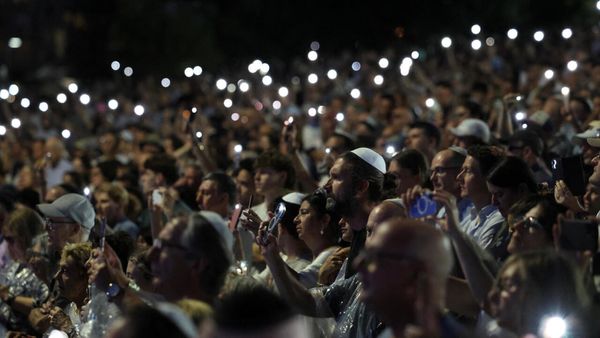Opinion
There are carrots, there are sticks, and there’s soft power. According to the most common definitions of the term used after American political scientist Joseph Nye made it a foreign policy byword, soft power is one of three ways in which a nation is able to effect a desired outcome in an international context. One, through military might, threats and coercion; two, through the use of economic and financial blandishments and sanctions. These two are together considered as a country’s hard power.
And then there is the use of soft power, an intangible mix of a country’s culture, connectivity, governance and freedoms that influences others into aligning themselves with its goals. “When you can get others to admire your ideals and to want what you want, you do not have to spend as much on sticks and carrots to move them in your direction. Seduction is always more effective than coercion, and many values like democracy and human rights, and individual opportunities are deeply seductive,” Mr. Nye wrote in his treatise, Soft Power: The Means to Success in World Politics.
For the past few decades, especially after the late U.S. President Richard Nixon’s visit to China and the opening up of the world economy, the break-up of the Soviet Union and the end of the Cold War, the invention of the Internet and the fillip it gave globalisation, soft power appeared be the preferred option for global powers. It was felt that in the 21st century countries were moving away from a path of confrontation and focussing more keenly on ending global poverty and inequality.
India’s rise on the global stage too was fuelled by its soft power: from Bollywood, yoga and Ayurveda, to its multicultural and pluralistic underpinnings as the home of most world religions.
A tougher world
More than two decades into the century, however, that resolve is already in some doubt, with the perception that soft power’s efficacy is in decline. This is for a number of reasons, most notably the rejection of soft power by global leaders, increase in global polarisation, rise of populism, militarisation of diplomacy and lowering of the exemplary values big powers adhere to.
The biggest attrition in soft power diplomacy has come from the big global powers themselves. Russia’s invasion of Ukraine, so much more brutal and adversarial than its operations in Crimea, where it actually won a referendum before it annexed the Ukrainian territory in 2014, show that its desire to ‘reunite’ areas through a show of soft power has substantially given way to hard power domination.
Sanctions by the U.S. and the European Union in retaliation to Russia’s actions point to a growing weaponisation of economic measures. The U.S.’s withdrawal from Afghanistan lock stock and barrel, in spite of the Taliban takeover, indicates an acknowledgement that any attempt at ‘winning hearts and minds’ had failed. China’s complete shutdown on information in the weeks and months following the outbreak of the COVID pandemic, coupled with its aggressive actions in the Taiwan Strait and along the Line of Actual Control (LAC) with India, have shown a similar disregard.
The shift in India
Closer home, the Narendra Modi government has shown less regard for soft diplomacy over harder means. In dealing with Pakistan, for example, the cancellation of talks and trade, the use of military force across the Line of Control in 2016 and the airstrikes in 2019 against terrorist attacks, and the ‘take it or lump it’ attitude over the Jammu and Kashmir dispute are the more visible signs of this. Less perceptible, but with more long-term effect, is the accompanying erosion of the soft power India had in Pakistan: a hard hand on visas, cancellation of all cultural exchanges and bans on collaborations in Bollywood and other film centres. In dealing with China and its transgressions across the LoAC since 2020, the Indian military has kept up talks and trade has burgeoned, but the government has rejected other bilateral engagements, including cultural ties.
Amid polarisation
So what are some of the big reasons for the slide in soft power over the last few years?
One blow to soft power has come from the growing polarisation between world powers at multilateral fora. For a decade now, the UN Security Council has been paralysed by the use of vetoes by the P-5 (permanent members), with the U.S., U.K. and France on one side and Russia and China on the other. Post-2008, Russia’s annexation of Georgian provinces and then the Crimean annexation led to its expulsion from the G-8 (now the G-7) grouping of the world’s richest countries.
China’s moves in the South China Sea and Taiwan Strait have also led to it being frozen out of western arrangements. The U.S.’s National Security Strategy 2017 and the National Defense Strategy 2018 spelled out clearly that it sees China and Russia as its biggest threats, setting the stage for more brinkmanship, and a clear policy of ‘with us or with them’ emerging, with little space for dialogue or discussions on other issues.
This can only yield a new version of the Cold War, with less and less space for a middle ground — and a full cleavage will likely be seen at the G-20 summit in Indonesia this year, with members split over whether to disinvite Russian President Vladimir Putin. As India assumes presidency of the G-20 in December this year, it will also face some difficult choices in attempting to build any global consensus post-Ukraine.
Rise of populism
The second big challenge to soft power diplomacy comes from the rise of populism and populist leaders worldwide. According to Jan-Werner Muller ( What Is Populism?), who studied dozens of democracies that have taken an authoritarian or extremist turn in recent years, the core of populist thinking appeals to an anti-pluralistic, anti-elite constituency that is inherently majoritarian. One of the common features of governments in the U.S. (under Donald Trump), Brazil, Hungary, India and others is that their foreign policy is firmly focused on domestic political gains amongst this majoritarian audience, something that would explain protectionist economic policies, a sharp uptick in hostilities with neighbours and rivals and anti-immigration measures. In addition, populist regimes engender scepticism about ‘internationalism’, the very antithesis to soft power, which depends on the deepening of globalisation and the use of an inclusive culture to work its influence.
In his critique of foreign policy in the Trump era, journalist Ronan Farrow ( War on Peace: The End of Diplomacy and the Decline of American Influence ) points to another phenomenon which chips away at soft power diplomacy: the rise of militarised diplomacy and the introduction of security officials at the negotiating table for regular bilateral engagements. “When civilians are not empowered to negotiate, military to military dealings still flourish… Foreign Ministries are still [at the table]. But increasingly, foreign militaries and militias have better seats,” Farrow writes, as he traces the change in American diplomacy since 9/11 and the wars that followed, and which came to a head during the Trump years in office.
The 2+2 example
The India-U.S. relationship has similarly changed. While earlier the “2+2” Strategic and Commercial dialogue involved the Foreign and Commerce Ministers on both sides, this was changed to a Foreign and Defence Ministers’ meeting post-2017. It is clear that defence ties with other countries are also taking a more salient position, as India has established similar foreign-defence “2+2” arrangements with Australia, Japan and Russia.
In addition, democracies like the U.S. and India are seeing more and more military leaders, retired generals, etc. being preferred for a number of senior Cabinet posts. While there is no questioning that defence and security are important components of any bilateral engagement, their inclusion at the table for all talks will no doubt dilute other forms of diplomacy.
Might is right?
Finally, there is the decline in the example that powerful nations are setting for the rest of the world. This is particularly important as soft power depends for a large part on the ‘attractiveness’ of another country for the way it is governed. China and Russia are showing the ‘might is right’ way has dividends in territorial accretions. Brutal regimes like the Myanmar Junta and the Afghan Taliban have learnt that in the absence of global leadership, they can continue to keep political prisoners in jail or girls out of school, respectively, without too much pushback.
Between 2017 and 2020, the U.S. walked out of several international understandings reached by consensus: from the Paris climate accord, the Comprehensive and Progressive Agreement for Trans-Pacific Partnership trade deal, the Iran nuclear deal, and global organisations like UNESCO and the UN Human Rights Council. U.S. President Joe Biden has reversed many of those decisions, promising to lead “not just by the example of our power but the power of our example”, but the challenge will be whether that commitment will be sustainable in the long electoral term.
The Indian ‘example’ for its neighbours is also losing its sheen. For decades, South Asian countries looked up to India as an enduring, pluralistic, inclusive democracy with strong institutional balancing, a thriving opposition and a vibrant media. In the wake of the recent attacks on minorities, government restrictions on media and NGOs, and the collapse of the opposition at the national stage, it is hard to argue that that’s still the case. SAARC members, most of which have strong religious majorities and leaders with authoritarian tendencies, may no longer wish to follow India’s example, or may learn the wrong lessons from it.
In soft power terms, as with the hard power tools of carrots and sticks, nations will do as you do and not as you say.







